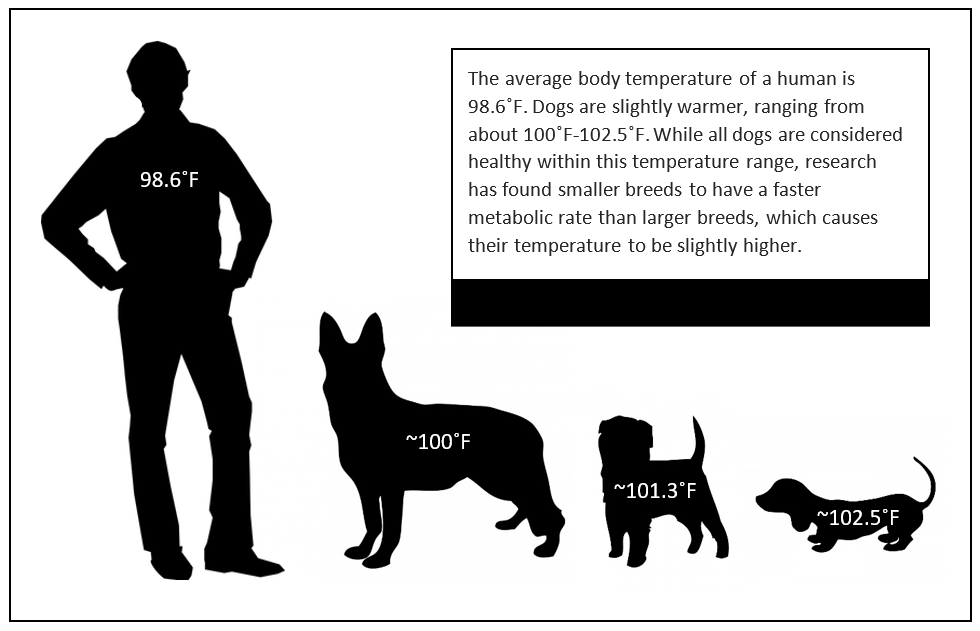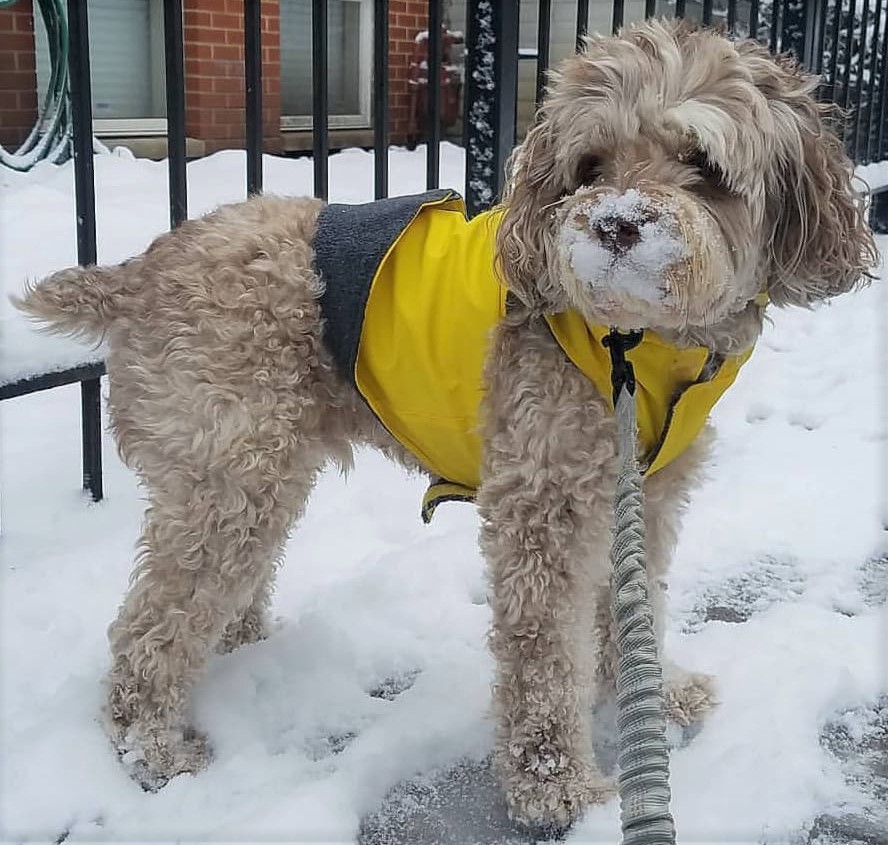By Stephanie Fox
Medill Reports
[googleapps domain=”docs” dir=”presentation/d/e/2PACX-1vSvt1qbYKIU3BsHzUHhLF57Mb40zXLdzAyfdBVtGOBZDcQod5Yn2-ThqATBUOrWMGCtOhol-l012MH6/embed” query=”start=false&loop=true&delayms=5000″ width=”500″ height=”280″ /]
There’s nothing more adorable than a dog dressed up for winter. Even before the first big snowfall of the year, social media platforms such as Instagram and Facebook are plastered in photos of French bulldogs wearing fuzzy holiday sweaters and videos of greyhounds wobbling across tiled floors in their winter booties. But, do canine winter clothes really serve a practical purpose, or are they just a cute addition to the holiday season?
The benefit of wearing a winter coat depends on the dog, but all dogs could benefit from winter booties, according to veterinarian Dr. John Hanover.
Wearing a dog coat is “very dependent on the dog’s breed, body size, hair coat and physical condition,” said Hanover, The Animal Hospital of Gurnee’s mixed practice veterinarian. That means Hanover works with dogs, cats and horses, using traditional veterinary techniques as well as his certifications as an animal chiropractor and acupuncturist to treat his patients. “[Winter clothes are] going to be dependent upon each individual pet.”
Still, Hanover warns owners of smaller dog breeds, especially those with short hair, to be more cautious as temperatures drop.

“A husky can handle something a lot colder than a little teacup poodle that’s been body clipped,” he said.
That’s because smaller dogs have a greater risk of coming in contact with snow and ice, which sticks to their fur and melts, causing the dogs problems even after returning indoors.
“The wet mats the hair down and it’s harder for them to regulate and send heat through their bodies,” explained Hanover. For this reason, it’s important for smaller breeds to have multiple winter coats. Putting a dog into a coat that was made damp on a previous walk could actually make a dog colder. Hanover also suggests that dog owners, regardless of the size of their pet, use a towel after walks to dry their dog’s fur.
Owners of puppies and senior dogs should also consider purchasing winter gear for their pets. According to Hanover, puppies don’t have the extra fat or energy to burn, which helps keep more mature dogs warm.
Vicktery Zimmerman, an Edgewater resident and owner of a 1-year-old dachshund mix named Zoey, said she witnessed this firsthand by her dog’s behavior.

Zoey “started shivering when I took her outside,” said Zimmerman. “She doesn’t weigh much. She’s only 15 pounds and I feel like she doesn’t have enough body fat to keep her warm… So, I always put her in [a coat] just to make sure.”
The weakened joints and muscle tissue of older dogs makes them more susceptible to the negative impact of cold weather as well—particularly for those with preexisting ailments.
“Extreme temperatures can compromise [a dog’s] respiratory tract and make them more susceptible to many pathogens,” Hanover said. “Cold and damp [weather] can be harder on the joints and soft tissue structures for animals with arthritis.”
But, at the end of the day, Hanover recommends that dog owners observe their pets to determine their individual needs.
“Common sense goes a long way. Stop and think,” Hanover said. “It’s the same as people. You get chilled and start shivering, which burns calories and energy. That makes it harder for you to function.”
Kathie Mills of Edgewater said she used her common sense to determine when to buy her 4-year-old, black mouth cur, named Bae a winter coat. “If it’s cold for us, we figure she needs a little bit more protection too,” Mills said.
Whether a dog is young and small like Zoey, short-haired like Bae, or even an average size, a winter coat has the potential to help them by regulating their body temperature and protecting their internal organs. It can’t do any harm.
In fact, some research suggests that larger dogs could benefit greatly from wearing winter coats because their average body temperature is slightly cooler than their smaller counterparts. Larger dog’s average body temperature is only a few degrees higher than a human’s, and smaller dog’s average body temperature is only a few degrees higher than larger dogs. If wearing a winter coat benefits humans, as well as smaller dogs, it makes sense that it would also serve a practical purpose for larger dogs, according to research conducted by psychologist Roberto Raffinetti and published in his paper “Daily Rhythmicity of Body Temperature in Dogs,” published in Journal of Veterinary Medical Science.

Accommodating breeds of all sizes is the goal of Jennifer Miller’s company, True Fit Dog Coats, which sells specialty dog coats to match breeds that don’t possess the body shape the majority of dog coats are styled for.
“The most coats we sell are the coats that fit more standard bodied dogs. The special breed coats are for the dogs that have unique body shapes,” Miller said. From sizes made for dachshunds to great danes to whippets, Miller sells coats for all breeds.
The coats Miller sells are made by Foggy Mountain Dog Coats. Twelve years ago, Miller accompanied her friend, and dog coat maker, to a dog show where she hoped to sell her coats, a product she has been perfecting for over 35 years. Miller said as soon as the Foggy Mountain Dog Coat booth was set up, she could see a need for an online store that could make the coats available to people around the country. Soon after, she started True Fit Dog Coats.
“I saw the people lined up [at the booth] 10-deep. It was insane. They wanted the coats,” Miller said. “On the way home I thought, ‘Geez. It’s too bad these people have to travel so far to get a coat if they don’t live near a store.’ So, I wanted to make them available for people who didn’t live near a store, but still wanted to buy the Foggy Mountain Dog Coats.”
Today, Miller’s company sells Foggy Mountain Dog Coats nationwide. The two cities racking up the most purchases are Chicago and New York.
“Chicago people are smart and they’re cold and they know a good dog coat when they see one,” she said. “We love Chicago.”
With months of snow and ice to come, Miller encourages dog owners to prepare for the cold weather.
“Winter is coming like it always does every year,” she said. “Try not to wait until the last minute when your little dog is cold. Think ahead.”
Thinking ahead involves more than just purchasing a winter dog coat. All dogs could benefit from wearing booties to protect paws from injuries cause by ice and salt.
The dogs most at risk of injury are those with longer fur between their toes and pads, according to Hanover. Similar to how snow sticks to a dog’s body fur, it can get caught in their paw fur and cause painful sores.
Booties can also reduce the chance of a dog being injured by the salts and chemicals used to melt ice in the winter.

Jenna Turnbull, a Pennsylvania resident, first witnessed the effects of street salts last year when she attempted to take her 7-year-old Maltese/poodle mix, for a walk.
“I was taking her for a really quick walk and it had just snowed the night before. On our driveway, we don’t use any salt or anything, we just shovel it and let it melt, but on the street, they use the big rock salt,” Turnbull said. “We were walking down the street and she literally just stopped and froze. I was like, ‘that’s really weird. I don’t know what that was.’ So, I had to pick her up and bring her back to the house. Every time I would take her for a walk out on the street it continually happened.”
Lisa Stolley, an animal lover and English professor at the University of Illinois at Chicago, also recalled how street salt led to the injury of her dog’s paws.
“When I had my dog Cody there were times he’d walk in that rock salt and pretty much fall over in pain,” Stolley said. But her larger concern came later when Cody would lick his wounds. “I’d have to throw myself on him so he didn’t lick his paws… I didn’t want that toxic shit getting in his mouth.”
Stolley was right to worry about the toxicity of the salts used to melt ice. According to Steve Vernik, vice president of Gaia Enterprises Inc., using street salt is dangerous—not only to pets, but to the environment.
“It’s one of the most horrible things we do to our planet on a regular basis that no one pays attention to,” said Vernik. “You would never dump bleach directly into the environment, yet [salt] is chlorine, and chlorine is just one ion away. [Salt] is almost the same thing as [chlorine], it’s just the solid form. And people are pouring that all over.”
Street and sidewalk safety are the reasons for using salt, but Vernik suggested a salt-free alternative that his company Gaia Enterprises Inc. makes.
After street salt led to bloody sores on the paws of the family dog in 1985, Gaia Enterprises Inc., a company which originally sold a salt-free ice melter called Safe Thaw, decided to alter its product to make it even safer. By 1995, the company had refined the recipe of the liquid de-icer and changed the name of their product to Safe Paw.
“It’s safe if ingested. It’s non-corrosive. It’s not at all harmful to pets if they touch it, if they eat a bucket of it. They can eat a ridiculous amount and be okay,” explained Vernik. “Some salt companies will sell a very pure-grade salt and it will say that it’s non-toxic because it’s just salt. But the problem is, if dogs or an animal ingests too much salt it is toxic.”
A guide to finding dog-safe ice melters can be found here.
Unfortunately, dogs often come in contact with salt-based ice melters that cut their paws and can lead to them licking the toxins from their wounds. Putting booties on a dog before a walk could reduce the risk of this happening.
The worst of this year’s snow and ice are still to come. Protecting a dog from cold and injury could be as simple as getting them Instagram ready by putting them into a fluffy coat and booties.


